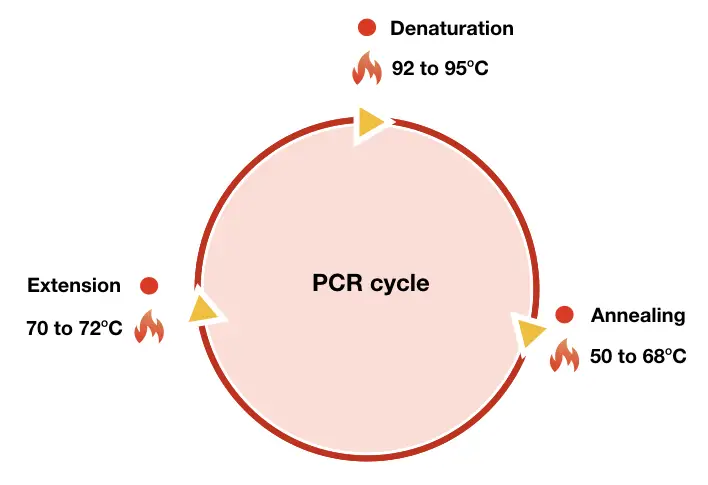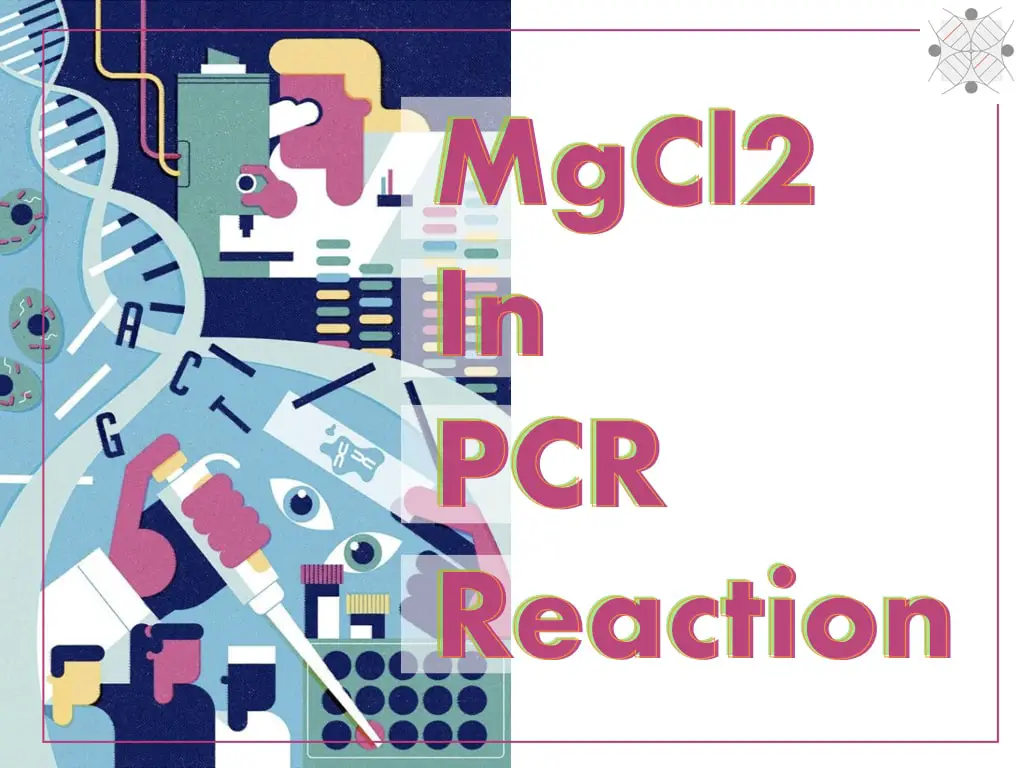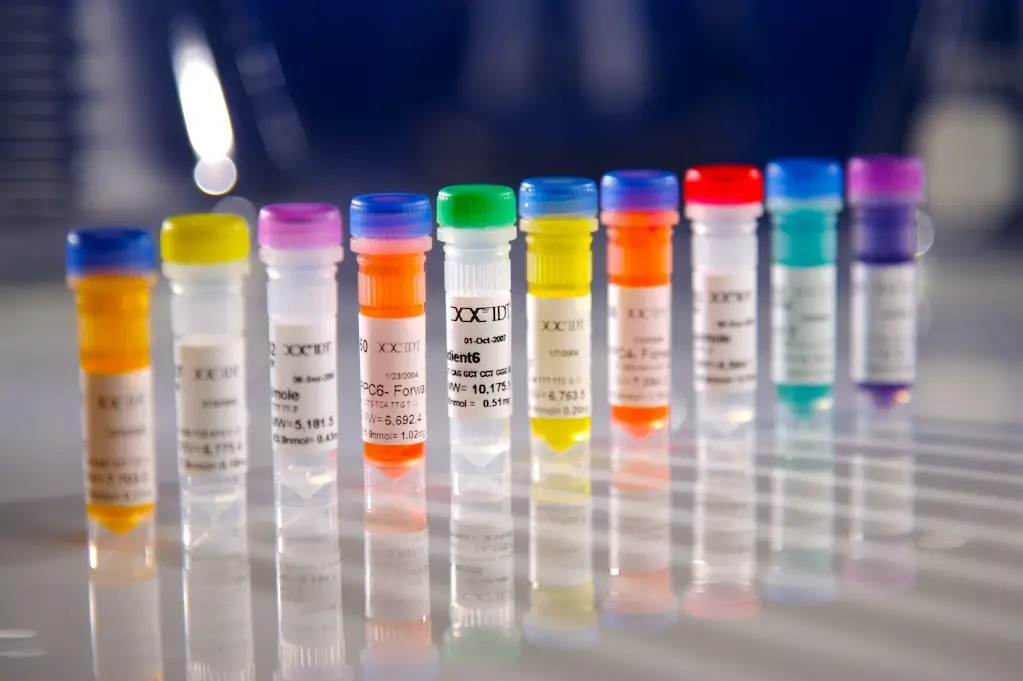What should be the key requirement to perform any molecular genetic experiment in which DNA is involved? Your answer will be ‘DNA’, Right? Let me tell you that you are partially right.
Not DNA, but the target DNA/target sequence or template region. That’s what we need.
However, the quantity of the template region that we obtained from the sample isn’t sufficient. We need thousands to millions of copies of our template DNA. Here comes the role of PCR.
PCR- Polymerase Chain Reaction is a crucial and common molecular genetic technique, required in almost every (molecular genetic) experiment. It copies DNA, specifically, our target DNA, millions of times. Thus, it has been pivotal to learn effective PCR strategies.
However, obtaining excellent, eye-catchy and understandable PCR results isn’t that easy. I have a couple of questions for you. Are you struggling with bad PCR or qPCR results? Are you getting frustrated with your gel or graph? Even expert tips and strategies are not working?
That, perhaps, is common for budding scientists and… let me tell you, for expert researchers as well. It has happened to me also. Our highly standardized experiment failed over time. Results got worse and worse and everything was messed up! Not single, but many times.
That is actually a common thing in a molecular genetic lab. However, so many factors lead to ‘not-a-good’ PCR or qPCR results.
In addition, it may happen that optimizations, tips and even expert advice will not work. So what to do in this case? Do we have to live our life with such bad results? 😄 or we can overcome it?
The answer is,
We can overcome it. By doing a simple experimental skills assessment. Sometimes, a simple thing or basic understanding will solve the problem. So in this article, I will explain to you the process of skill assessment to improve the PCR or qPCR results.
This article is a kinda roadmap or you can say experimental (skills) assessment for your PCR experiment.
PS: This article is not a straightforward tips and tricks type, rather, we will focus on skills assessment and skills building.
Related article: PCR Troubleshooting 104: Understanding False-Positive and False-Negative results.
Key Topics:
Improve PCR or qPCR results– skill assessment:

Recall theoretical knowledge:
If you are working for years in a genetic lab, I can understand how solid your theoretical foundation would be! Still, I strongly advise you to start from the beginning. Recall your theoretical knowledge.
Read articles on basic PCR things. Understand the concept, principle and process. Re-learn different types of PCR, and understand differences and strategies for each type of PCR. You have to do a self-assessment, whether you have misunderstood any concept or not.
If so, re-learn it or else go ahead.
You can explore this category to read articles on PCR: PCR technology by Genetic Education.
Study primer design:
Primer design is an important computational tool for any PCR experiment. So scientists must have hands-on knowledge of primer design and validation. If not, perhaps you have to rely on literature or need someone else to do the work for you.
In this case, it may be possible that the primer set isn’t adequate for your experiment. You have to check the primer length, GC content, binding capacity, hairpin and dimerization capacity. You have to do all these assessments by yourself.
In addition, you have to validate your primers, their strength, effectiveness and product size using other additional tools like PrimerBLAST or In Silico PCR.
For example, if you show more primer dimers or background amplification in your PCR, you can understand that only if you have designed and validated the primers. For let’s say our primer showed self primer binding capacity. Bingo! You know the reason.
Right!
In this case, you have to design other primers, trust me no optimization will effectively work in this case. In conclusion, you need to have a solid understanding and hands-on experience in primer design and validation skills. If not, learn those right now!
Understand the reaction
Are you aware of the reaction and reaction components?
You must know the reaction– what you are adding, how you are adding, in which amount you are adding ingredients and what’s the function of each ingredient in the reaction. For example,
Does your reaction contain MgCl2? Because Mg+ ions work as a cofactor for Taq DNA polymerase which boosts the amplification process. Contrary, if your reaction contains too much MgCl2? That will unnecessarily boost the activity of Taq DNA polymerase and result in non-specific bands and primer dimers.
And the same will apply to other components as well.
You have to learn about dNTPs, primers, nuclease-free water, Taq DNA polymerase, even probes in case of qPCR, template DNA and the composition of PCR reaction buffer to do effective troubleshooting. In conclusion, the PCR reaction, reaction preparation and component must be known to you.
Pipetting and chemical preparation:
That’s very basic skills, aren’t they?
Put aside all things and do an assessment of your pipetting and reagent preparation skills. If you are an experienced scientist, that’s pretty awkward to you but let me tell you– Do it.
Ask someone to closely monitor if you are doing correct pipetting, if you are measuring chemicals well enough and if you are preparing reagents with adequate conditions. If you are confident about these skills, do some advanced assessment.
Check if the pipettes are calibrated, are chemicals good enough, are your lab conditions adequate for preparing the reagents, etc. Also, know are the instrumental and utilities used in this process, working finely or not?
“Mastering the skills of pipetting and reagent preparation will help you master PCR.”
Related article: 10 Strategies to Achieve Excellent PCR Amplification.
Common lab practices:
Do you know about healthy lab practices? If yes, are you strictly following those? Are you,
Wear a lab coat?
Clean working area?
Wear a mouth cap and head cap?
Follow strict PCR conditions?
If No. Then you have to learn about it and develop healthy practices to work in a genetic lab. I strongly recommend referring to the common lab practices for PCR. Contamination by mishandling will result in reaction failure, non-specific amplification or primer-dimer in the reaction.
Reaction optimization:
This skill is also so crucial for any PCR reaction or qPCR protocol. You should be aware of the reaction optimization options. Re-understand the example of MgCl2 that I have given above.
The PCR reaction can be optimized using components like MgCl2, DMSO, KCl, Glycin, Formamide, Betaine and BSA, etc. These components can either improve the efficiency of amplification or reduce the primer-dimer or non-specific amplification.
You should have an idea about the function of each of these chemicals, why we are using this in the reaction, when we use it and in which amount we have to use it in the reaction.
For doing all these you should have to sharpen your reaction optimization skill. Nurture yourself under an expert’s guidance, practice hard, play with the reaction and conduct different optimization to learn this skill.
Moreover, read peer-reviewed articles on PCR additives or each of these components.
Finding the problem:
Whether you are working in PCR or any other industry, you should have a problem finding skills. Let’s discuss problem finding in terms of PCR. To do so, you need to have a keen knowledge of understanding the results.
So you need to know what you are observing in the gel or on the graph and you will have that sense that something is wrong with the results. However, most of the time, no amplicons, more amplicons and primer-dimers are commonly visible and easily understandable.
The point is, you need to know what your experiment is suffering from and with what problem, and then only you can demonstrate it to others or find the solution. In case, you don’t understand the results and are unable to find problems, make sure to note down the results for future analysis.
Drawing possible solutions:
Now, the next step is, you have to solve the problem.
Let’s say you see more than two amplicons in the gel. This shows non-specific amplification and clearly demonstrates that either primers or any reaction parameters are compromised.
If you are aware of that, for let’s say you know that you have added additional MgCl2 in the reaction or reduced the annealing temperature below given, your problem is solved! You already know about that.
That’s the game. As a scientist, you need to know what you have added to the reaction, how it works, what it will cause and what altered impact it has on the reaction.
Quality control:
Quality control is the strength of your reaction. Use controls in your reaction as quality control parameters. For example, positive control helps you to understand false-positive results while internal control will help you to understand the overall quality of your reaction preparation.
Use quality control for your DNA sample, reaction preparation and even to evaluate the results. I have prepared a decent article on this topic, you can read it here: PCR controls- Positive, Negative and Internal Controls.
Wrapping up:
In conclusion, to improve your PCR results or understand and troubleshoot any problem you face during your PCR reaction, you need to have this roadmap I can say; not tips and tricks.
Tips and tricks definitely work but are kind of shortcuts, in my opinion. Understanding the process, the basics and the logic behind every step and thing will improve your overall knowledge of the topic and help you gain more expertise, authority and experience.
I hope this article makes sense to you and will help you in your PCR endeavor. Next time, whenever you find difficulties solving PCR problems, do this skills assessment, this will surely help you.

